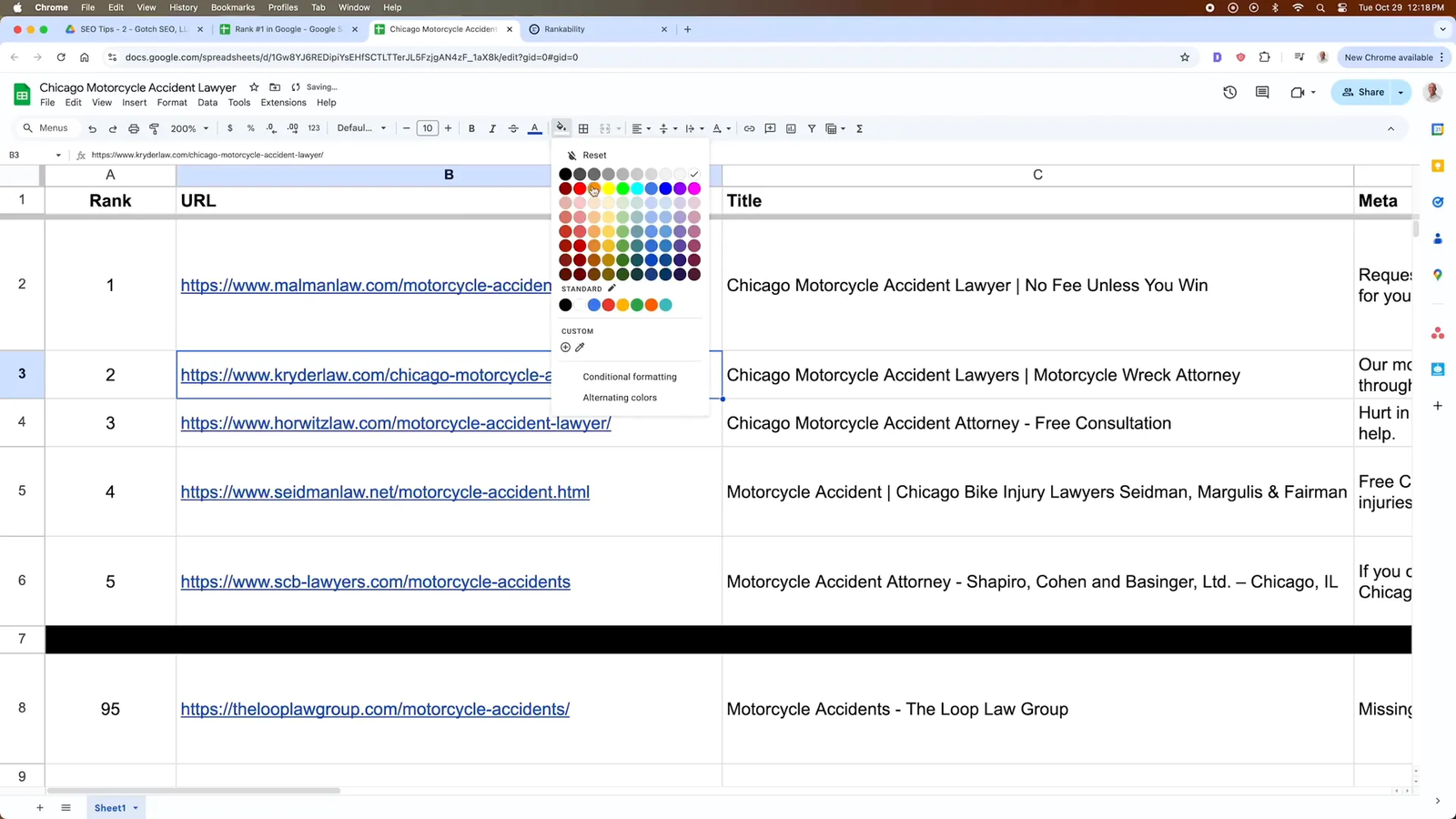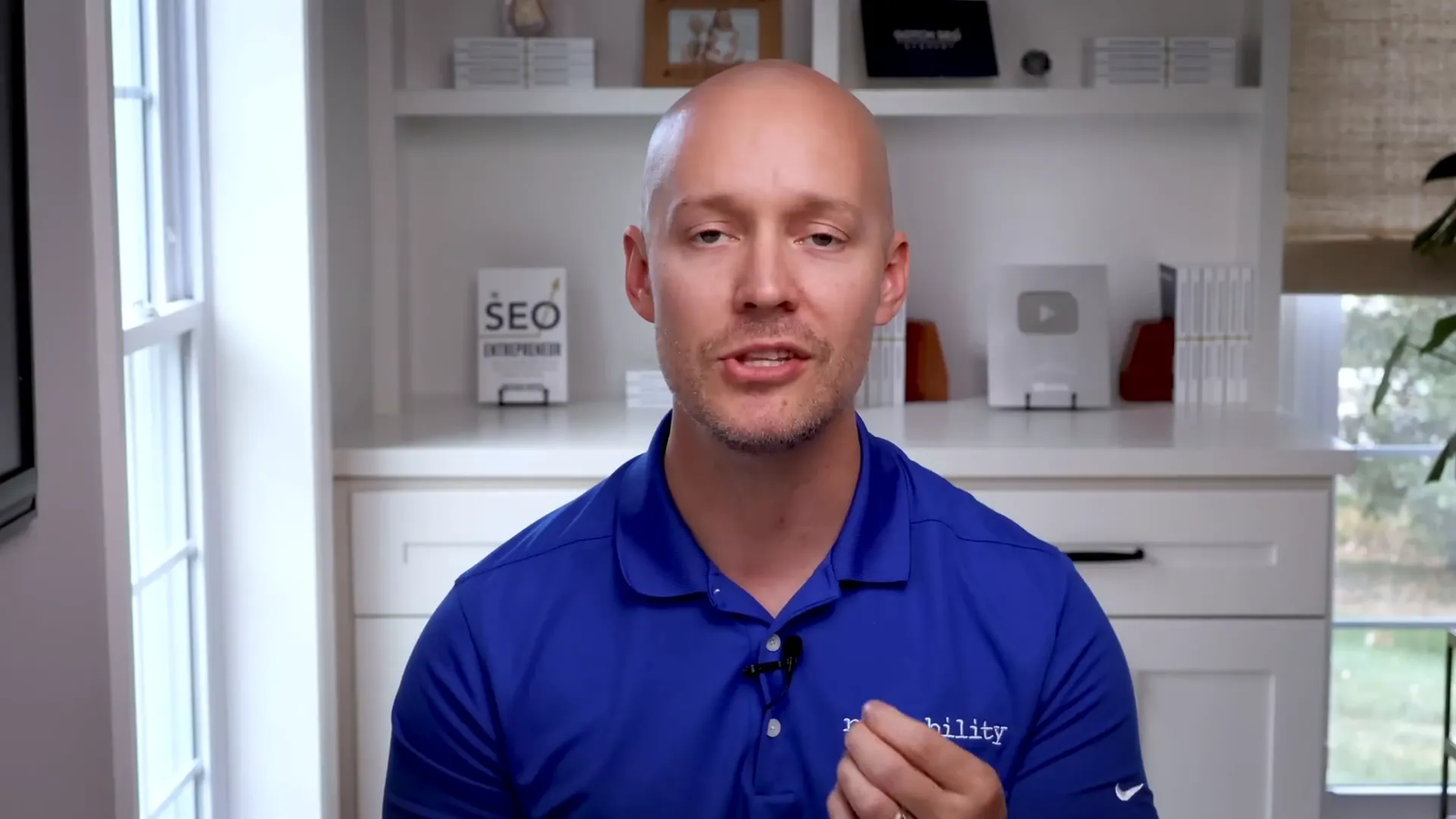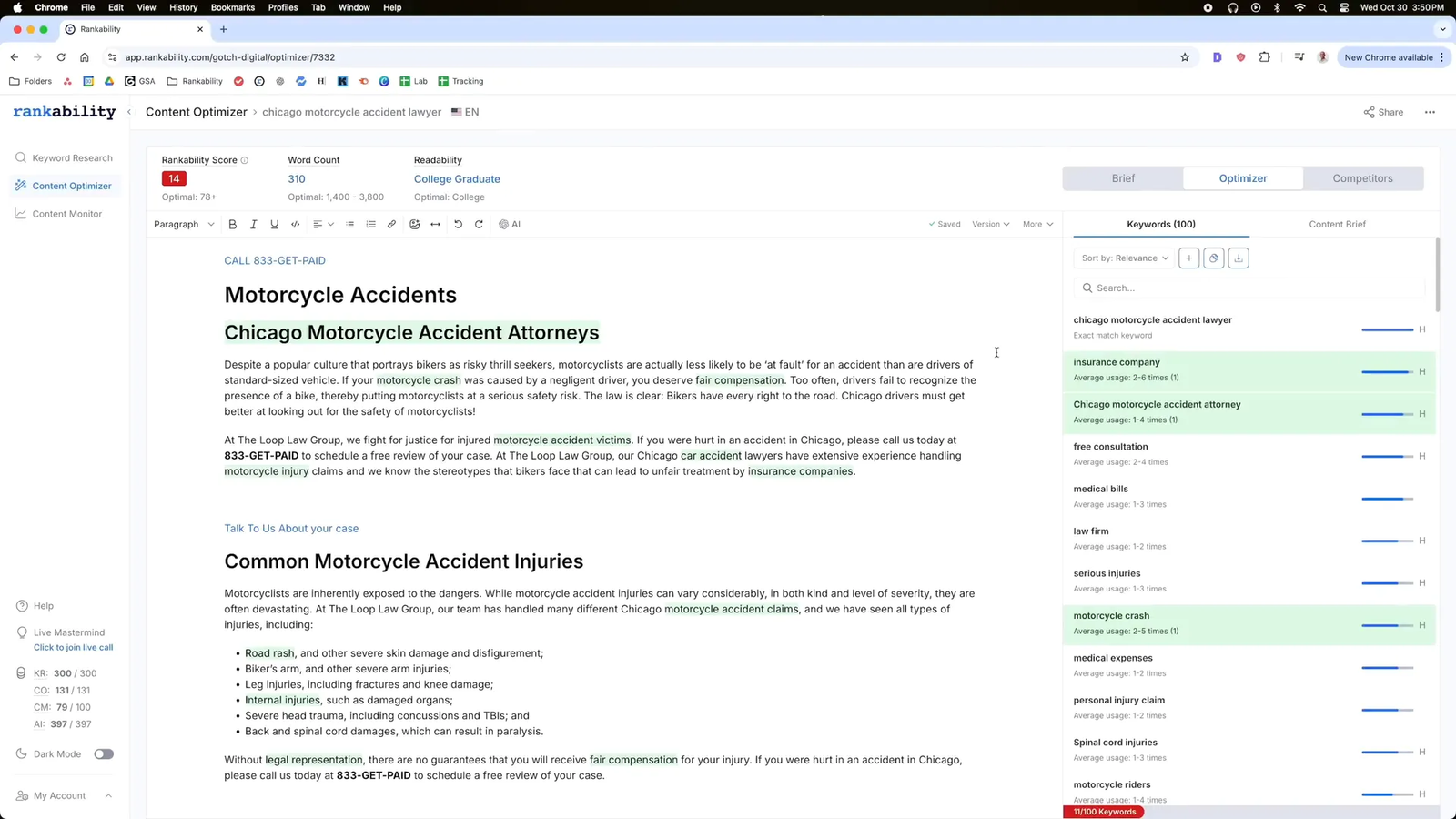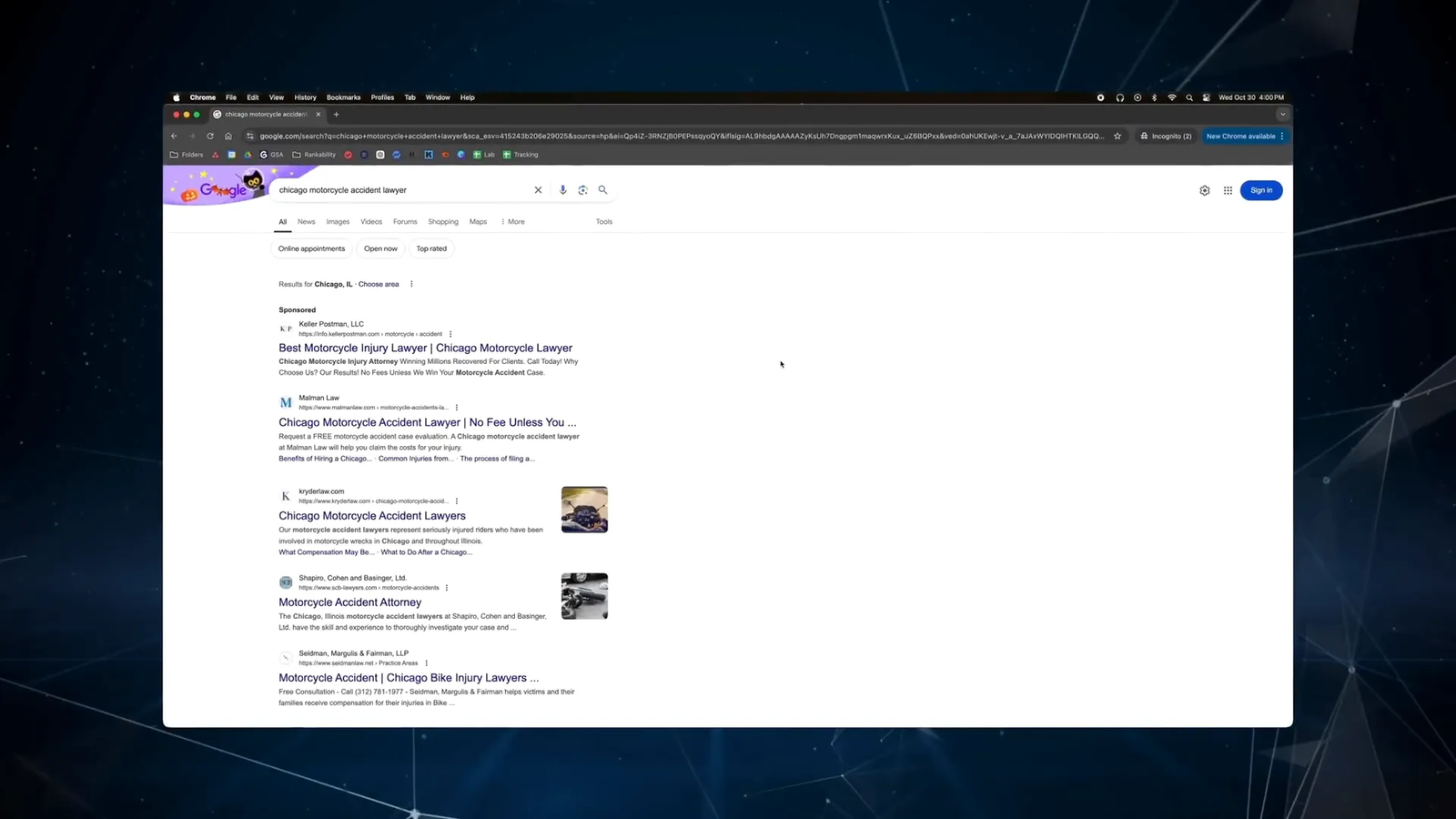According to SEO expert Nathan Gotch, over 97% of webpages get zero traffic from Google. So how do the top 3% rank number one in 2025?
Nathan has spent more than 10 years helping websites in legal, SaaS, and health niches dominate search results. Based on that experience, he created a 4-step SEO strategy that consistently delivers top rankings.
Here’s a breakdown of Nathan Gotch’s 4-step system to rank number one on Google in 2025:
-
Exploit SEO Competitors – Analyze top-ranking pages to uncover SEO weaknesses in their title tags, URLs, and keyword placement.
-
Match Search Intent & Differentiate Content – Align your page perfectly with what searchers want, using testimonials, CTAs, and engagement-focused design.
-
Feed Google with NLP-Optimized Content – Use Natural Language Processing (NLP) tools to write highly relevant, comprehensive articles.
-
Build Trust with Internal Links & Backlinks – Create content clusters, link them internally, and use targeted link-building to increase site authority.
This blueprint isn’t just theory—it’s a repeatable system that’s helped many websites grow traffic by 200%+ in 30 days.
Step 1: Exploit Your SEO Competitors 🕵️♂️
The first step is to thoroughly analyze your SEO competitors to uncover their strengths and weaknesses. Start by searching your target keyword on Google and open the top five competitors’ pages. Create a Google Sheet to systematically track their on-page SEO elements.
Here’s what to collect for each competitor:
- Title tag and meta description (using a Chrome extension like Detailed)
- The first official paragraph from the page
- Rankability score from Rankability’s content optimizer, which measures a page’s relevance and topic coverage compared to top competitors
Repeat this for all top five competitors and your own page if applicable. Even if you’re not ranking in the top 100, you can still get a Rankability score by entering your URL.
Once you have this data, analyze key SEO elements like URL structure, title tags, meta descriptions, H1 tags, and keyword placement in the first paragraph. For example, a strong URL includes the entire keyword phrase—something many competitors often miss. Your title tag should contain the exact match keyword phrase, as Google rewards precise matches. Meta descriptions, while a minor ranking factor, should include the primary phrase but avoid cluttering them with phone numbers since your goal is to increase organic click-through rate (CTR).
Additionally, check your page’s topic coverage. The strongest competitors have comprehensive content that fully addresses the keyword intent. This analysis alone reveals how to outrank others by simply fixing on-page SEO weaknesses.
Step 2: Match Search Intent and Differentiate Your Content 🎯
After mastering the basics, it’s crucial to identify your unique angles to stand out. I analyzed the top ten results for the keyword “motorcycle accident attorney” and found key ways to win:
- Match the intent perfectly: If someone searches for a motorcycle accident attorney, they’re likely looking to hire a lawyer, not read safety tips. Your page must help the visitor know, like, and trust you by including bottom-of-the-funnel content like testimonials, case studies, and unique selling propositions.
- Crush the competition with better content design: Avoid fluff. Every element on your page should serve one goal—helping prospects become leads. Scrutinize your copy and page layout to ensure it drives conversions.
- Install engagement triggers: Google uses user engagement signals as a ranking factor. Increase dwell time with well-produced videos or interactive tools like a micro calculator (e.g., “How much is your motorcycle accident case worth?”) to boost user interaction and satisfaction.
Step 3: Feed the Machine with NLP-Driven Content 🧠
Natural Language Processing (NLP) is a technology used by Google and other tech giants to understand human language. You can leverage NLP to create highly relevant content that Google loves.
Here’s how to do it:
- Enter your keyword into Rankability. The tool scrapes the top competitor content and extracts important topics using NLP.
- Use these NLP keyword recommendations to build a detailed content outline.
- Enhance your outline by feeding your law firm’s About page into ChatGPT to personalize and refine it.
- Paste the improved outline back into Rankability for further optimization.
- Add a human touch to the outline to ensure it reads naturally and connects with your audience.
When it comes to writing the content itself, there’s a choice between AI and human writers. For competitive keywords like “Chicago motorcycle accident lawyer,” the top-ranking pages mostly feature human-written content. This suggests that investing in skilled copywriters who can produce lean, compelling, and comprehensive copy is the way to go.
Provide your copywriter with the Rankability content brief via a shared link so they can write directly within the content optimizer. Encourage them to focus on covering topics thoroughly rather than keyword stuffing, aiming for the optimal Rankability score.
Step 4: Force Google to Trust Your Website 🔗
Google’s ranking algorithms now evaluate whether sections of your site remain within a consistent topic or “circle of competence.” To build trust and authority, create many supporting content assets that reinforce your expertise in the main topic.
Start by examining the “People Also Ask” section on Google for your primary keyword. Use these questions to generate supporting articles like:
- How much are most motorcycle accident settlements in Chicago?
- Why do Chicago insurance companies total motorcycles with little damage?
- What are the odds of having a motorcycle accident in Chicago?
Make sure to internally link all these informational assets back to your main commercial page and cross-link them to form a strong content cluster.
Next, use tools like Semrush to analyze your domain’s most powerful pages by backlinks. Identify opportunities to add internal links from these pages to your SEO-driven commercial page.
Creating linkable content is essential because not all content attracts backlinks. For example, a page answering “What time is it in Chicago?” won’t help with link building, but a data-rich page like “75 Chicago Motorcycle Accident Statistics for 2025” will.
To generate more linkable content ideas, reverse engineer your competitors’ backlink profiles using Semrush and replicate their successful strategies. You can also use ChatGPT to brainstorm endless “link bait” ideas quickly.
Once you have valuable linkable assets, launch a targeted link-building campaign to boost your site’s authority and rankings.
FAQ 🤔
What is the Rankability score and why is it important?
The Rankability score measures how relevant and comprehensive your page is compared to the top competitors for a specific keyword. A higher score means your content covers the topic better, which improves your chances of ranking higher on Google.
Should I use AI or human writers for SEO content?
For competitive keywords, human-written content tends to perform better because it is more nuanced and engaging. However, AI tools can help create outlines and ideas efficiently. Combining both can be a powerful strategy.
How can I improve my page’s click-through rate (CTR) from Google?
Optimize your title tag and meta description to include exact match keywords and compelling language. Avoid clutter like phone numbers in meta descriptions, and focus on enticing users to click through your result.
What types of content should I create to build trust with Google?
Create supporting informational content that answers related questions and concerns your target audience has. Use internal linking to connect these assets to your main commercial page, forming a strong topical cluster.
How do engagement triggers affect SEO?
User engagement signals like time on page and interaction rates influence Google’s ranking algorithms. Adding videos, interactive calculators, or other engaging features can increase dwell time and improve your rankings.
Conclusion
Ranking number one on Google in 2025 demands a strategic, data-driven approach. By following these four pillars—exploiting your competitors’ SEO weaknesses, perfectly matching search intent with differentiated content, leveraging NLP to feed Google’s algorithms, and building trust through supporting assets and link building—you can dramatically increase your organic search traffic and dominate your niche.
This blueprint isn’t just theory. I’ve used it to grow pages by over 200% in just 30 days and triple website traffic on multiple occasions. If you want even more actionable tips, check out this step-by-step SEO guide inspired by Neil Patel. It complements this strategy perfectly and gives you another proven roadmap to hit the top spot on Google.
Now it’s your turn to implement these steps and watch your rankings soar.




